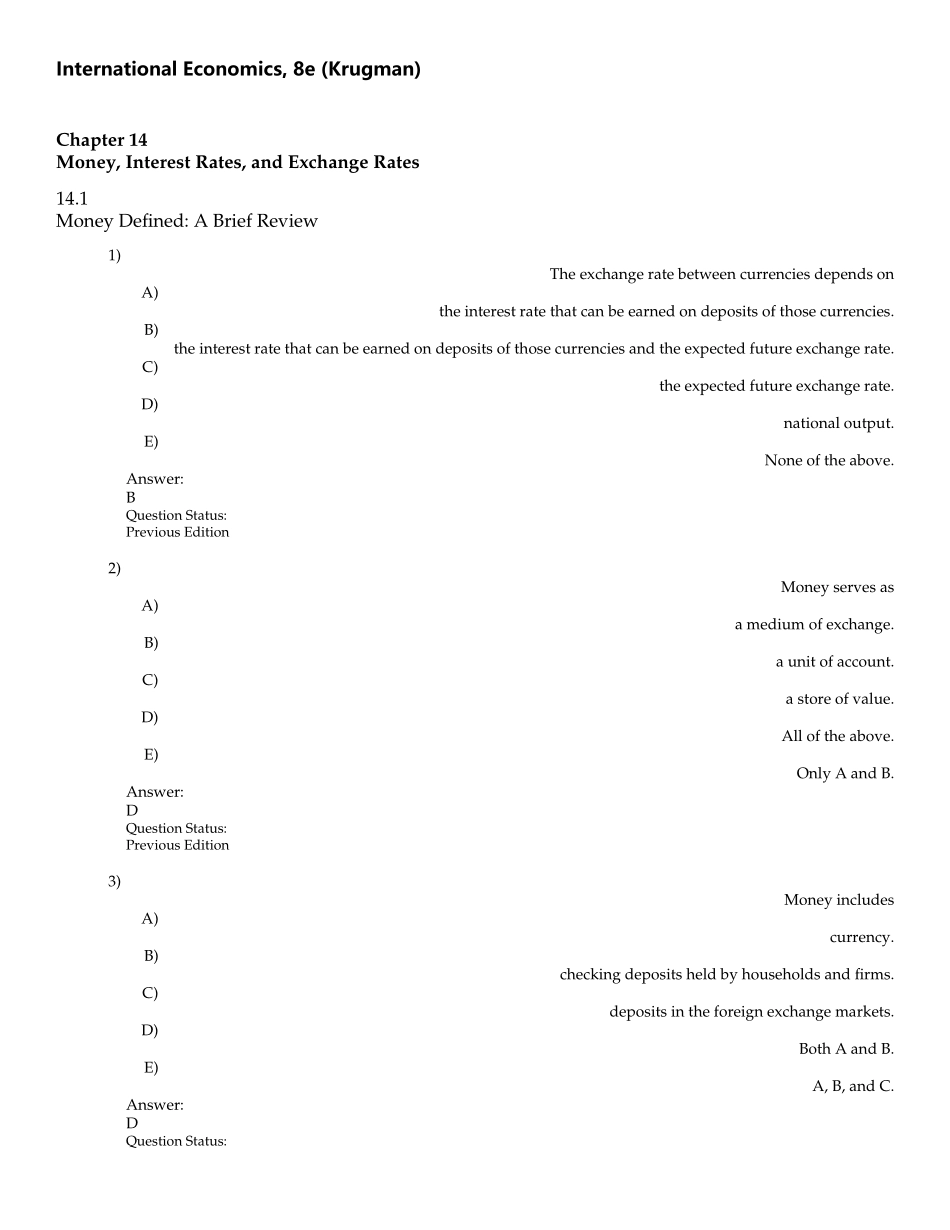国际经济学题库 31036(19页)Good is good, but better carries it.精益求精,善益求善。International Economics, 8e (Krugman) Chapter 14 Money, Interest Rates, and Exchange Rates14.1 Money Defined: A Brief Review1) The exchange rate between currencies depends on A) the interest rate that can be earned on deposits of those currencies. B) the interest rate that can be earned on deposits of those currencies and the expected future exchange rate. C) the expected future exchange rate. D) national output. E) None of the above. Answer: B Question Status: Previous Edition2) Money serves as A) a medium of exchange. B) a unit of account. C) a store of value. D) All of the above. E) Only A and B. Answer: D Question Status: Previous Edition3) Money includes A) currency. B) checking deposits held by households and firms. C) deposits in the foreign exchange markets. D) Both A and B. E) A, B, and C. Answer: D Question Status: Previous Edition4) In the United States at the end of 2025, the total money supply, M1, amounted to approximately A) 10 percent of that year's GNP. B) 20 percent of that year's GNP. C) 30 percent of that year's GNP. D) 40 percent of that year's GNP. E) 50 percent of that year's GNP. Answer: A Question Status: Previous Edition5) What are the main functions of money? Answer: Money serves in general three important functions: a medium of exchange; a unit of account; and a store of value. As a medium of exchange, money avoids going back to a barter economy, with the enormous search costs connected with it. As a unit of account, the use of money economizes on the number of prices an individual faces. Consider an economy with N goods, then one needs only (N - 1) prices. As a store...


